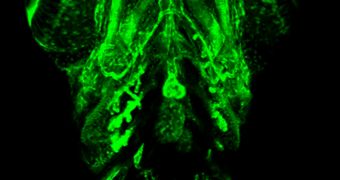Who said aliens don't live amongst us?
Canadian physicians at Vancouver's St. Paul's Hospital lived the shock of their career when they tried to put an arterial line into a patient about to undergo surgery.
The 42-year-old man had fallen asleep while kneeling in October 2005 and developed compartment syndrome in both legs (a buildup of pressure in deep muscle tissue) and unless the surgical intervention had been performed, permanent nerve damage could have been installed.
Arterial lines are employed to monitor blood pressure during an operation; the artery blood should be vivid red, showing oxygenation in the heart. "During insertion, we normally see arterial blood come out. That's how we know we're in the right place. And normally that blood is bright red, as you would expect in an artery," said Dr. Alana Flexman. "But in his case, the blood kept coming back as dark green instead of bright red. It was sort of a green-black. ... Like an avocado skin maybe. We were very concerned, obviously," said Flexman.
The unusual case has been reported in this week's issue of the journal The Lancet.
The samples were rapidly analyzed in the lab, and they clearly ruled out a dangerous condition named methemoglobin, in which the blood's red pigment, hemoglobin, can't bind to oxygen.
Meanwhile, the man was operated and supported well the surgery. The next day, the analysis detected that the blood discoloration was caused by sulfhaemoglobinaemia which occurs when a sulfur atom gets incorporated into hemoglobin. "It's so rare that we don't have a perfect understanding how it happens, but some drug donates a sulfur group that binds to the hemoglobin molecule and prevents it from binding to oxygen," Flexman explains.
"And that gives it the green color. It is possible that our patient's arguably excessive intake of sumatriptan, which contains a sulfonamide group, caused his sulfhaemoglobinaemia," said the physicians. "The patient recovered uneventfully, and stopped taking sumatriptan after discharge. When seen five weeks after his last dose, he was found to have no sulfhaemoglobin in his blood," they added.
Sulfhaemoglobinaemia usually goes away as red blood cells regenerate, but in very extreme cases a transfusion could be necessary.

 14 DAY TRIAL //
14 DAY TRIAL //